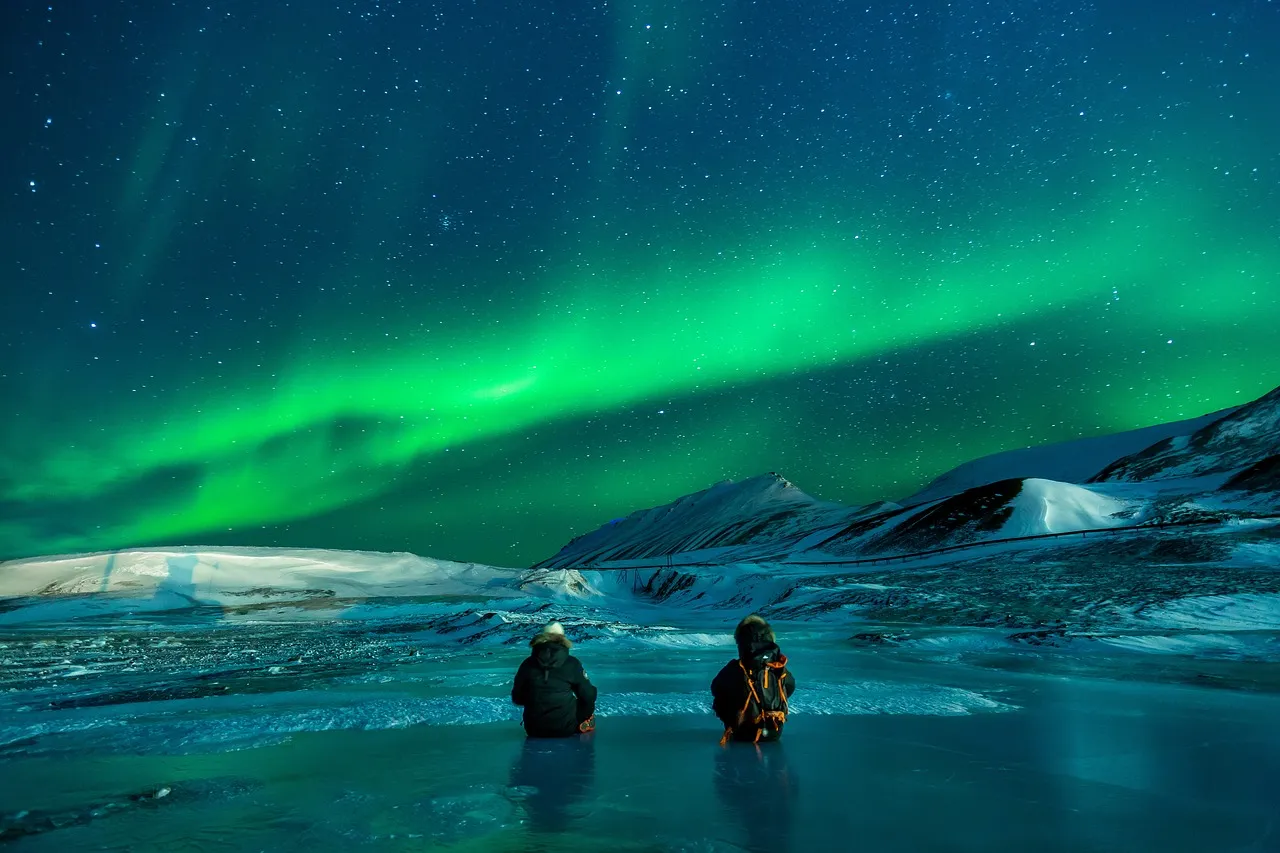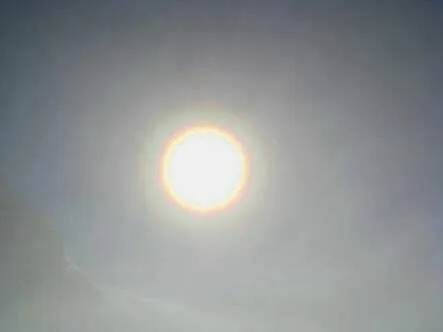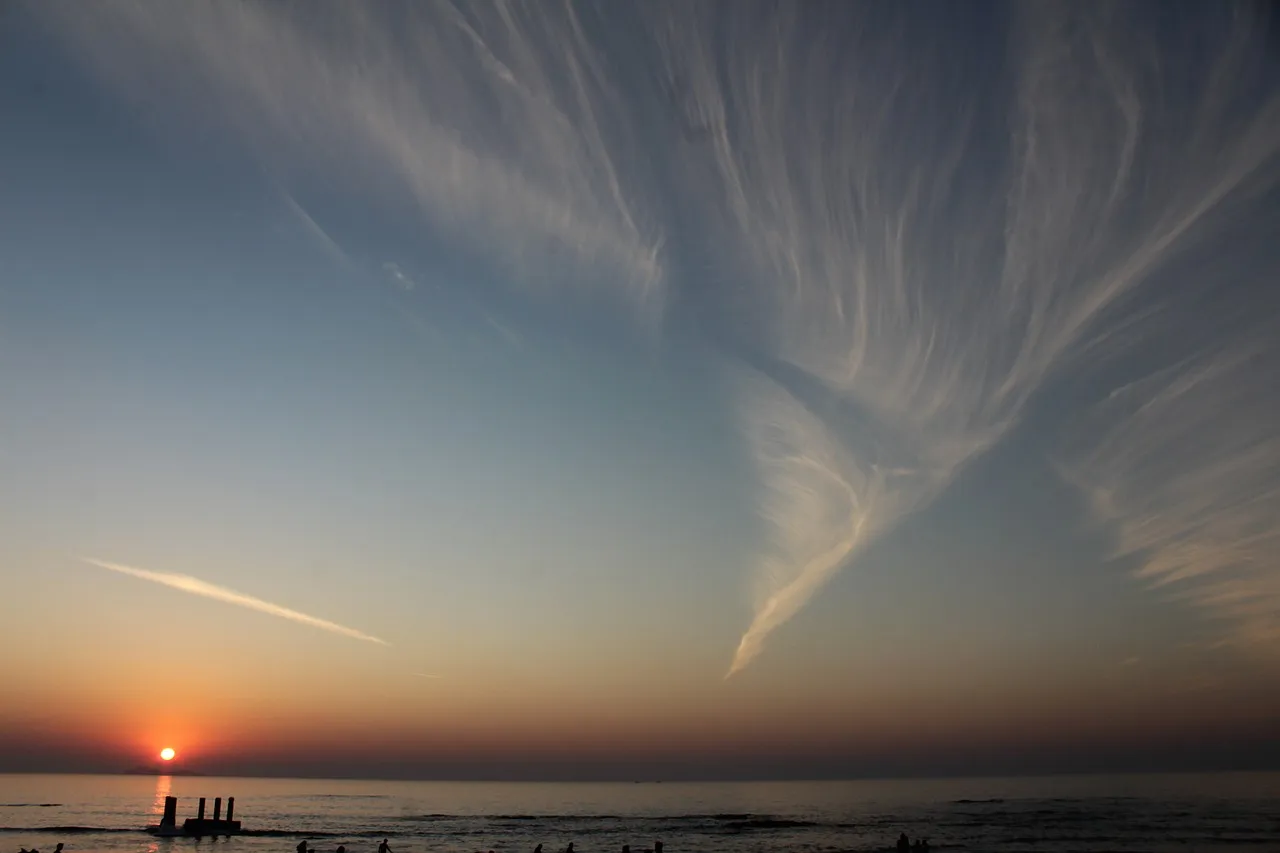After almost getting my skin peeled by the rays of the sun some days ago it just hit me, what if I were to be in the Northern poler region, take a stroll in the Ice not having to worry about the sun's radiation which can literally take the life off someone, probably I won't be getting this shit, I thought, but is the region far north all roses?
It's amazing how some parts of the earth is know for the high intensity of heat from the sun while places like the Arctic begs for it.
Today I decided to share with the blockchain my little research on the Arctic regions, what make this region so cold leaving those who live there worry less about the he sun's radiation, how is life like for the early people of this areas, what's special about the poler regions, these questions and more will be answered, join me as we take a look at this cold part of our earth.
The Arctic Region
The artic have been given about different definitions by scientists, firstly, it's said to be a region above the Arctic Circle and the Arctic Circle being an imaginary circle round the globe at about 66° 34' where there is no sunset in the summer and no sunrise in the winter.
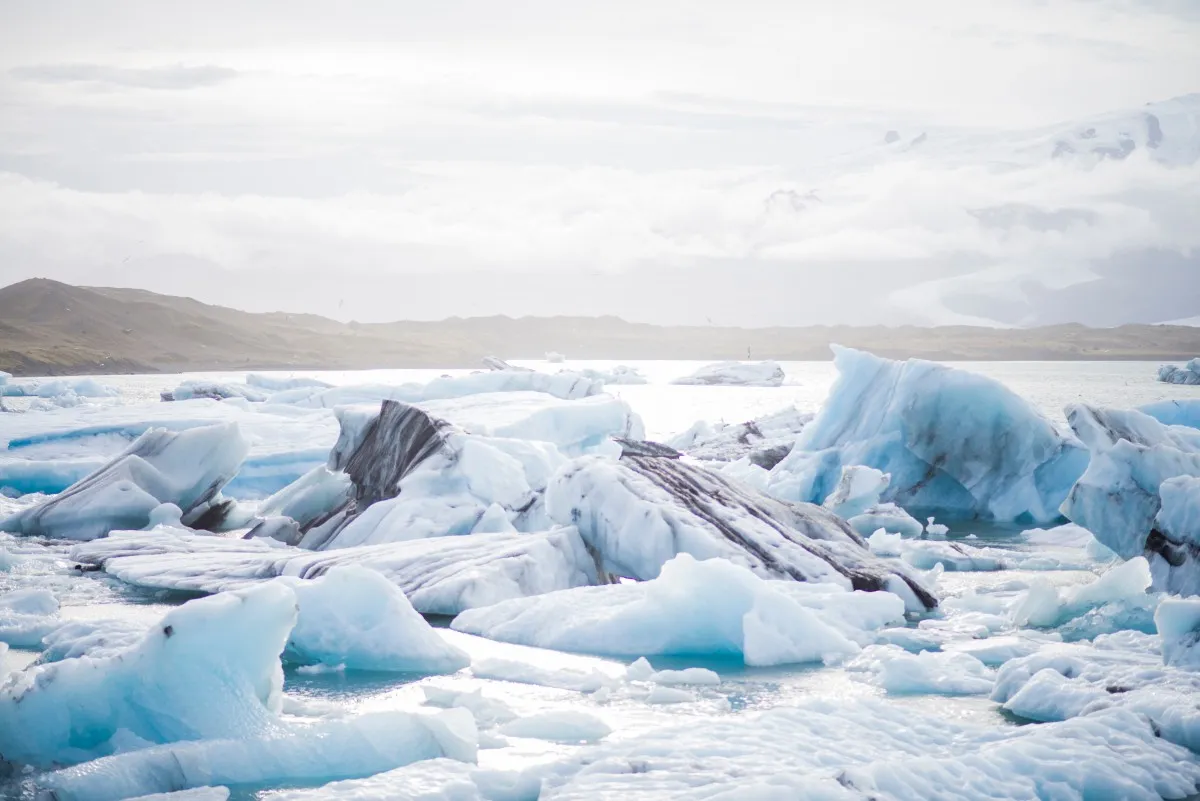
Pxhere: A view deep in the Arctic
Others say it's an area north of the arctic tree line which have a frozen landscape with little shrubs and lichens while some might as well define the Arctic based on the temperature of the area but one thing is common to them all which is the cold climate of the Arctic, hence an Arctic region can be said to be a region towards the North Pole where it's average temperature dose go above 10°C.
Now you might be asking ask, what exactly is the reason behind the temperature of the Arctic region?
Why The Cold Arctic Climate?
Nature sees other parts of the Earth to be of a temperate climate but this area with the cold, did nature forsake this area? Some may ask, now we will go into some reasons why the poler regions are of such temperature, this is also significant to the south poler region, guessing you can't wait to know, let's begin with this:
Less Tropospheric Water Vapor
This brings to light the greenhouse effect which is important for the warm temperature of the earth. Greenhouse gases are those which absorbs and emits radiation above the infrared range and they are the main requirement for greenhouse effect. Of other greenhouse gases, water vapour is a good example most especially in the lower troposphere due to its large quantity.
Another greenhouse gas is carbon dioxide which is a stronger greenhouse gas but it's presence in the air is quite less compared to water vapour. For water vapour to be in the air for the greenhouse effect, there must be the necessary potential for the evaporation of this gases but the poler regions are known for their cold temperature which leads to low capacity of the region to bring about evaporation of water vapour hence bringing about low water vapour in the region.
With less of the greenhouse gas in the air the earth's lower troposphere will be seen to absorb less longwave energy thereby loosing them to space resulting to a lower temperature of the polar regions, this effect is less in the summer period.
Less Daylight Hours
One common characteristics of the region above the arctic during the winter season is the reduction in the hours of daylight, hence a little daylight period for the energy from the sun to reach these area this leads to a cool temperature region.
However the warm or summer season do not see same characteristics as daylight increases in the summer season in the poler areas. In the regions about the Arctic Circle there is daylight period for nearly 24 hours and the temperature of such places is know to be a bit temprate in the summer than the winter period.
Though the variations in daylight when compared to other parts of Earth that is not the only reason for the cold experienced in this place, let's get know to other reasons which made the Arctic regions cold.
High Albedo Of The Region
When we talk Albedo, we simply refer to the ratio of light reflected by an unpolished surface to that absorbed by the surface,The earth is known to reflect energy from the sun in form of reflected Light waves and the other non reflected rays are sent down, the balance of this play a significant role in the temperature of a region leading to warm or cold temperatures.
When the Albedo of a region is high the rate of reflection will be high, water, snow and ice are examples of good reflectors of the solar radiation mostly in a period the sun angle to an area is significantly low. In poler regions , the sun angle is low to an extent through the year hence less amount of solar radiation from the sun reaches the ground as they are reflected back to the space.
The Length Of The Troposphere
This is simply is the length radiation from the sun travels from the upper tropospheric part of the earth right down to the surface of the earth. This length varies in different place as it is at its minimum when the sun is overhead a region and a maximum when the sun is close to the horizone.
In the polar regions, the sun is near the horizon which leads to the scattered ray of the sun hence they are deflected from the earth, however, this is not so when the sun is directly upon an area the tropospheric length becomes less hence more heat of the sun is gotten by these areas.
The Angle Of The Sun
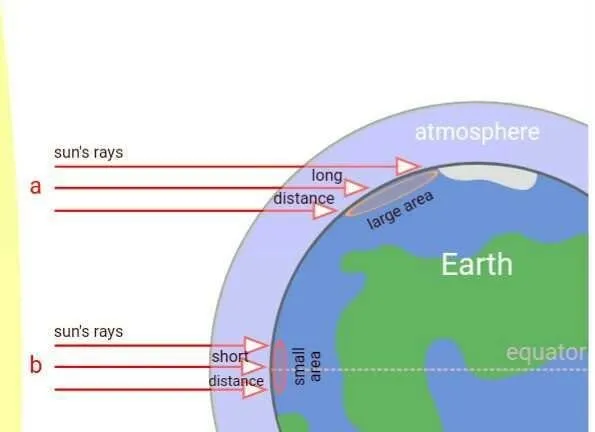
WikimediaNotice the angle of the sunPeter Halasz(Username Pengo)Licenced under CC BY-SA 2.5
The sun angle on this area is that which brings together other factors on this section, what I mean is, the tropospheric length is more due to the low sun angle, same with the high amount of reflection, the few daylight hours and the cold air which brings about less vapor of water to act as an element for greenhouse effect.
Take for example looking at the length of your shadow through the day, you will notice its variation in length at different sections of the day, this simply implies that when the sun moves close to the horizon, the shadow becomes longer which result in the radiation of the sun spreading across a large area leading to less intensity of the radiation to.
Hence we can conclude saying that the radiation intensity from the sun is less in the poler regions than in areas of of low latitude since a low intensity if the sun leads to a less warmed earth surface.
Man And The Artic Region - The Eskimos
To have a view of how life is deep in the Arctic, we will take a study of the inuit people who were once known as the Eskimos. History says they were the last to arrive North America hence the good land were all taken by hostile Indians making them to choose the Canadian Arctic as a place of settlement, who would have wanted such as the Arctic was referred to be the worst settlement in the world due to its climate but just like you know man to be an adaptive being, the inuit mastered the art and they have been seen to survive the Arctic for thousand of years now.
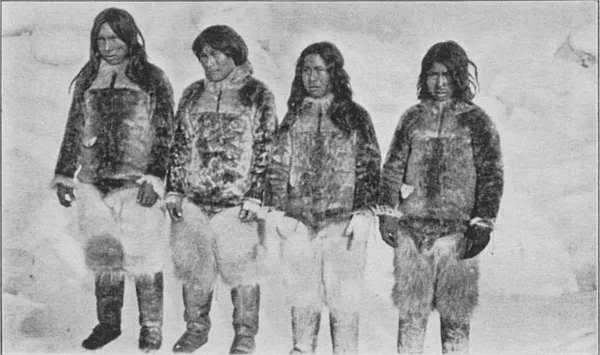
Wikimedia : Eskimos by Matthew Hanson licensed under CC BY-SA 3.0
Their habitation span through the Northern Canada and Siberia. Let's get to know how they survived this harsh part of the world, won't you want to know?
Life In The Canadian Arctic
Just like we have stated the Arctic is known for its cold nature with the winter period having less daylight, the inuit people were forced to find a way to live in this harsh situation hence they had to plan every part of their life towards this, from shelter, food, movement and their lifestyle on general.
They are one of those who have no problem with overpopulation of their landmass as their geographical area was somewhat empty (who would want to have to fight for a pice of land in an ice cold land). Their season were more of the winter hence they had to adapt for the very harsh snow and ice for the most part of the year, the soil at the surface stay frozen all year.
Their environment always is faced with windstorm which will cause the snow to blow harshly, it is a frozen desert. Summer time was short for few months each year and it sometimes comes with the sun never fully set leading to a never ending daylight and the winter mostly dark sometimes months of complete darkness at the far North, plants only grow during the summer which is known to be less compared to the summer seeing plants like the lichens, mosses and the scrub bushes Surviving the summer period before being faced by the harsh cold of the winter.
First off what do they do for shelter?
Housing In The Arctic
Due to the nature of this region, they always had to move from one place to another hence they have to build houses which can be easily built as the climate for the summer is quite different from that of the winter.
During the summer period since the environment was less of the cold, the inuit people are seen to build small tents which is made from wood or poles and covered with an animal skin. They use borders to hold these tents to the ground to combat anything which might try to pull it out and try as much as possible to protect their tents since woods are rearly found in this areas.
The summer period sees them coming together to form villages but during the winter period they scatter in search of food by hunting
The winter comes with its cold, they had to find a way to survive the cold by that comes with it hence the most common type of house for the winter 'THE IGLOO' is normally built.
The Igloo
This is a house made of snow bricks, the igloo is of a doom shape being built from snow blocks which can be gotten from cutting from large snow blocks and this blocks are pilled up in a special manner making them to lean in as it goes upwards hence a doom shape.

Pixabay: The build igloos during the winter
Holes formed at the edges are filled with soft snow and the sleeping platforms inside the igloo made of ice blocks which are covered with furs, the igloo is said to be a quick house for the inuit people as it can be made from 20-30 minutes with respect to the size of the igloo.
This house is capable of reducing the temperature from -40 degrees outside it to about 0 degree inside the igloo and when a good body insulation material is used, Surviving the winter is on its go.
The Inuvialuit Houses
The Inuvialuit is a name given to the inuit people of Western artic, these areas is blessed with access to some amount of trees hence they would build wood and sod houses for the winter perood. This type of house involves digging a large hole in the ground and with rings of poles placed vertically, sods are pilled up on them which stay in place.
The result is a house which has its floor below the ground level such that warmth is gotten, a fireplace is setup so as to cause continuous warmth in the log and sod house.
For clothes, theirs is made from animal skin and furs and they wear this in different layers to take care of the cold.
Feeding In The Arctic
Since plants do not grow well in the region the inuit people depend solely on animals for their meals, they are good hunters and caught different kinds of food through the year as the animals they feed on vary due to the climate.
Sea animals like the whales, walruses, seals, and other sea mammals were hunted for during the winter periods, land animals also hunted were the Arctic Fox, caribou, the Arctic hare, musk oxen, the Arctic birds and the poler bear.
During the winter, animals becomes harder to hunt and fishing becomes more difficult due to the fact that the Arctic ocean is covered with ice, however they would find a way to find food during this period by ice fishing and hunting seals, they would wait for the seals at their breathing holes and when the seals came up to breath they would be killed by these hunters.
The Ringed seal was the most hunted as they are used for an all year round source of food by the inuit people through different hunting patterns, from October to November when the freezing begins, these seal breathing holes can be easy to find but from December down to March, the holes were found but they are hard to locate due to the thick ice which covers the area, from April to June young seals are normally hunted and from July to September is the open water season, hunting is mostly done, fishing was also a good source of food for the inuit people, and in the winter they fish through holes in the Ice.
Moving From Place To Place In The Arctic
Transportation by the inuit people depend on season, as well known, they are migratory people moving from place to place for survival, thus during the winter, they travel by foot or by sledge moved by dogs and on the summer , they make use of the sea travelling by boats. Their boats are normally built light and small and of a one person type, easy to paddle within the sea. Sometimes they travel with the large boats called the Umiaks which is normally used when transporting from camp to camp or for hunting large animals like the Whales.
They lived a nomadic life moving from place to place in search of food since they were mainly hunters and fishermen, living in costal areas during the winter which saw seal hunting easy, making temporary camps in those areas and in the winter period they move in small groups for fishing.
How do you see such lifestyle, that's what living in the deep in Arctic is like. Though we have stated the Arctic to be a not very cool habitable place, there exist some cool natural phenomenon which are associated to this areas due to the climate it posses. Join me as we take a look at some of them you would be wowed.
Some Cool Phenomena Of The Arctic Region
The Arctic features some amazing phenomenon due to the unique climatic condition of the area, some explanations to some optical phenomena is the fact that some ice crystals can be suspended in the air thus affecting the way light travels, light bouncing off the cloud bent, refracted leading to some amazing sights
Sometimes sounds can be heard from three kilometers away due to the rate sound wave travel in this area, the sound range is dependent on the temperature of air in an area, the wind speed and its direction and also the rate the earth absorbs this sound energy, in perfect condition in the Arctic, conversations can be heard kilometers away, some phenomenon associated with the Arctic below.
The Aurora
The Aurora appears clear in the sky during solar storms, a type of Aurora called the Aurora Borealis appear around the North geomagnetic pole and is clearly seen in the Arctic regions whereas the Aurora Australis appears on the southern hemisphere.
This looks like lights hanging in form of a curtain almost like they touch the ground but in real sense, they are far above into the sky, far higher than the height an airplane can fly. Their different colours are due to the different forms of gas at different altitude and it's colour come in red, green, yellow and blue on occasional base.
Coronas
This is seen like a light sometimes series of light surrounding the sun or moon and it is said to appear when there is defraction of light by water vapour. They are mostly blue inside and red outside. This tend to occur when the rays of the sun or the moon shine through diffuse thin clouds as the waves gets deflected slightly around the clouds.
Water Sky and Ice Blink
This simply refers to a phenomena when the underside of a cloud appears dark when over an open water, and the Ice blink simply implies a white glare which can be seen on the underparts of lower clouds, this is due to an ice which reflect light. This was normally used by poler travelers to get rough ideas of distance and ice condition of areas.
Halos
This is said to have occurred when a ring of light is seen around the sun which is as a result of refraction of light through ice crystals bringing about a well defined ring, it's different from the corona which is caused by the defraction of light through water droplet in the cloud.
The Sun Dog

Wiki Commons:A Sundog by Gopherboy6956 Licensed underCC BY-SA 3.0
The Sun dog is a form of halo where there is also an appearance of luminous spot at the sides of the sun
Whiteout

WikimediawhiteoutHannes GrobeLicenced under CC BY-SA 2.5
This phenomena is said to occur when there is uniform witness of the sky and the snow hence the horizon can not be distinguished leading to the inability to differentiate far and near objects, this can be hazardous for aircraft.
Whiteouts normally occurs during the spring or fall in the period when the sun is close to the horizon. Other necessary conditions for this is the altostratus, the stratus overcast, uniform snow cover and the cirrostratus. Possible whiteouts are predicted using the cloud state.
Optical Haze
This is a phenomenon which occurs like a fog or mist causing objects at distance to be blur, it occurs at the air layer which is next to the ground level when warm air flows upwards and cold air decends thus bringing about a convective current of the wind, when the warm and cold air refract light it causes objects which is viewed through the layer to appear blur, this is know mostly to the Arctic.
Bringing It All Together
A region of cold, the earth is just spectacular I wondered. It maveld me when I had to write about the nature of day and night experienced in the Arctic region and I can only stare in awe the wonders of life.
It's just amazing how the inuit people ( as I would prefer to call them after reading that the word 'Eskimo' comes from meaning an 'eater of raw meat', don't want to have my head broken) survive this climate, as we have seen, it's not an easy task, having to move from one place to another in search of food, living in igloos and tents, always trying to stay protected from the cold climate, many will call them the unlucky ones on earth but I must say they did good with what they were presented with and that's the adaptive nature of man, I guess you have learned a thing or two from them if you are to find yourself deep in the Arctic someday.
It so happen some of the cool natural phenomena occurs at the Arctic, don't hang me with the ropes if I say the Arctic is closer to nature than any other place on earth, and by the way, for more of these natural phenomenon on the blockchain, @ruth-girl is just the place to be.


